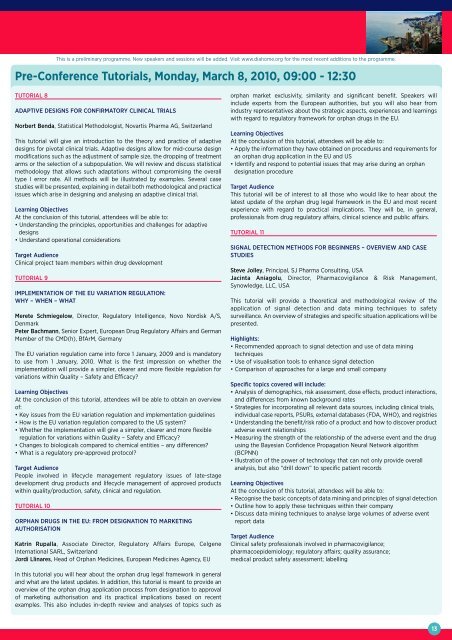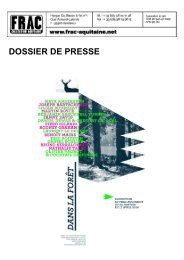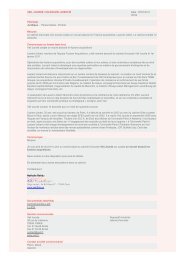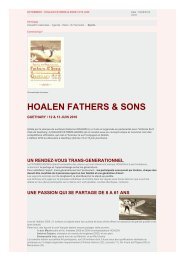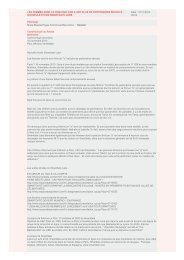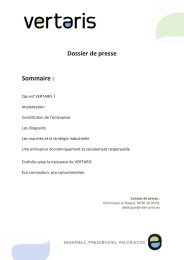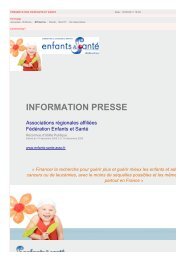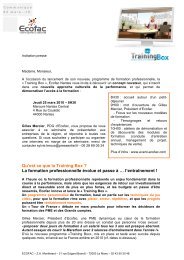Pre-Conference Tutorials, Monday, March 8, 2010, 09:00
Pre-Conference Tutorials, Monday, March 8, 2010, 09:00
Pre-Conference Tutorials, Monday, March 8, 2010, 09:00
Create successful ePaper yourself
Turn your PDF publications into a flip-book with our unique Google optimized e-Paper software.
This is a preliminary programme. New speakers and sessions will be added. Visit www.diahome.org for the most recent additions to the programme.<br />
<strong>Pre</strong>-<strong>Conference</strong> <strong>Tutorials</strong>, <strong>Monday</strong>, <strong>March</strong> 8, <strong>2010</strong>, <strong>09</strong>:<strong>00</strong> - 12:30<br />
TUTORIAL 8<br />
ADAPTIVE DESIGNS FOR CONFIRMATORY CLINICAL TRIALS<br />
Norbert Benda, Statistical Methodologist, Novartis Pharma AG, Switzerland<br />
This tutorial will give an introduction to the theory and practice of adaptive<br />
designs for pivotal clinical trials. Adaptive designs allow for mid-course design<br />
modifications such as the adjustment of sample size, the dropping of treatment<br />
arms or the selection of a subpopulation. We will review and discuss statistical<br />
methodology that allows such adaptations without compromising the overall<br />
type I error rate. All methods will be illustrated by examples. Several case<br />
studies will be presented, explaining in detail both methodological and practical<br />
issues which arise in designing and analysing an adaptive clinical trial.<br />
Learning Objectives<br />
At the conclusion of this tutorial, attendees will be able to:<br />
• Understanding the principles, opportunities and challenges for adaptive<br />
designs<br />
• Understand operational considerations<br />
Target Audience<br />
Clinical project team members within drug development<br />
TUTORIAL 9<br />
IMPLEMENTATION OF THE EU VARIATION REGULATION:<br />
WHY – WHEN – WHAT<br />
Merete Schmiegelow, Director, Regulatory Intelligence, Novo Nordisk A/S,<br />
Denmark<br />
Peter Bachmann, Senior Expert, European Drug Regulatory Affairs and German<br />
Member of the CMD(h), BfArM, Germany<br />
The EU variation regulation came into force 1 January, 20<strong>09</strong> and is mandatory<br />
to use from 1 January, <strong>2010</strong>. What is the first impression on whether the<br />
implementation will provide a simpler, clearer and more flexible regulation for<br />
variations within Quality – Safety and Efficacy?<br />
Learning Objectives<br />
At the conclusion of this tutorial, attendees will be able to obtain an overview<br />
of:<br />
• Key issues from the EU variation regulation and implementation guidelines<br />
• How is the EU variation regulation compared to the US system?<br />
• Whether the implementation will give a simpler, clearer and more flexible<br />
regulation for variations within Quality – Safety and Efficacy?<br />
• Changes to biologicals compared to chemical entities – any differences?<br />
• What is a regulatory pre-approved protocol?<br />
Target Audience<br />
People involved in lifecycle management regulatory issues of late-stage<br />
development drug products and lifecycle management of approved products<br />
within quality/production, safety, clinical and regulation.<br />
TUTORIAL 10<br />
ORPHAN DRUGS IN THE EU: FROM DESIGNATION TO MARKETING<br />
AUTHORISATION<br />
Katrin Rupalla, Associate Director, Regulatory Affairs Europe, Celgene<br />
International SARL, Switzerland<br />
Jordi Llinares, Head of Orphan Medicines, European Medicines Agency, EU<br />
In this tutorial you will hear about the orphan drug legal framework in general<br />
and what are the latest updates. In addition, this tutorial is meant to provide an<br />
overview of the orphan drug application process from designation to approval<br />
of marketing authorisation and its practical implications based on recent<br />
examples. This also includes in-depth review and analyses of topics such as<br />
orphan market exclusivity, similarity and significant benefit. Speakers will<br />
include experts from the European authorities, but you will also hear from<br />
industry representatives about the strategic aspects, experiences and learnings<br />
with regard to regulatory framework for orphan drugs in the EU.<br />
Learning Objectives<br />
At the conclusion of this tutorial, attendees will be able to:<br />
• Apply the information they have obtained on procedures and requirements for<br />
an orphan drug application in the EU and US<br />
• Identify and respond to potential issues that may arise during an orphan<br />
designation procedure<br />
Target Audience<br />
This tutorial will be of interest to all those who would like to hear about the<br />
latest update of the orphan drug legal framework in the EU and most recent<br />
experience with regard to practical implications. They will be, in general,<br />
professionals from drug regulatory affairs, clinical science and public affairs.<br />
TUTORIAL 11<br />
SIGNAL DETECTION METHODS FOR BEGINNERS – OVERVIEW AND CASE<br />
STUDIES<br />
Steve Jolley, Principal, SJ Pharma Consulting, USA<br />
Jacinta Aniagolu, Director, Pharmacovigilance & Risk Management,<br />
Synowledge, LLC, USA<br />
This tutorial will provide a theoretical and methodological review of the<br />
application of signal detection and data mining techniques to safety<br />
surveillance. An overview of strategies and specific situation applications will be<br />
presented.<br />
Highlights:<br />
• Recommended approach to signal detection and use of data mining<br />
techniques<br />
• Use of visualisation tools to enhance signal detection<br />
• Comparison of approaches for a large and small company<br />
Specific topics covered will include:<br />
• Analysis of demographics, risk assessment, dose effects, product interactions,<br />
and differences from known background rates<br />
• Strategies for incorporating all relevant data sources, including clinical trials,<br />
individual case reports, PSURs, external databases (FDA, WHO), and registries<br />
• Understanding the benefit/risk ratio of a product and how to discover product<br />
adverse event relationships<br />
• Measuring the strength of the relationship of the adverse event and the drug<br />
using the Bayesian Confidence Propagation Neural Network algorithm<br />
(BCPNN)<br />
• Illustration of the power of technology that can not only provide overall<br />
analysis, but also “drill down” to specific patient records<br />
Learning Objectives<br />
At the conclusion of this tutorial, attendees will be able to:<br />
• Recognise the basic concepts of data mining and principles of signal detection<br />
• Outline how to apply these techniques within their company<br />
• Discuss data mining techniques to analyse large volumes of adverse event<br />
report data<br />
Target Audience<br />
Clinical safety professionals involved in pharmacovigilance;<br />
pharmacoepidemiology; regulatory affairs; quality assurance;<br />
medical product safety assessment; labelling<br />
13


